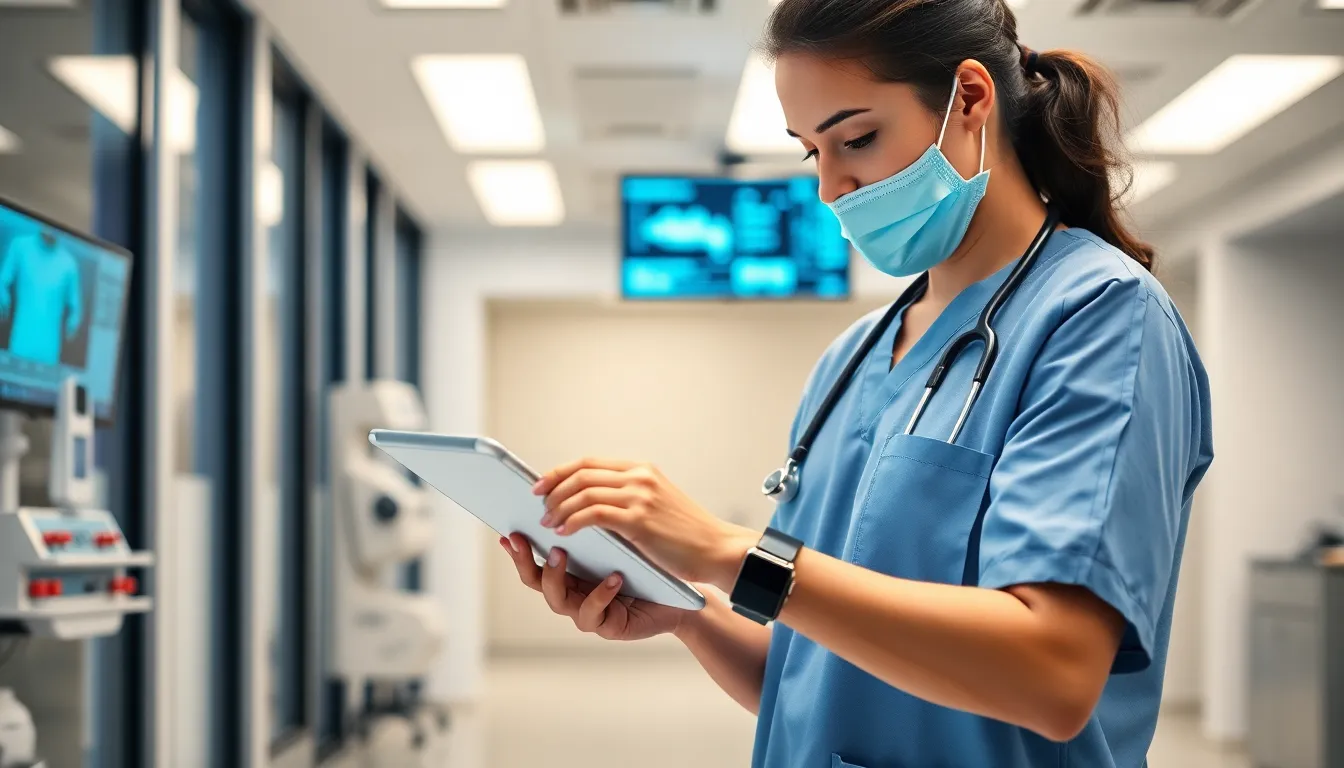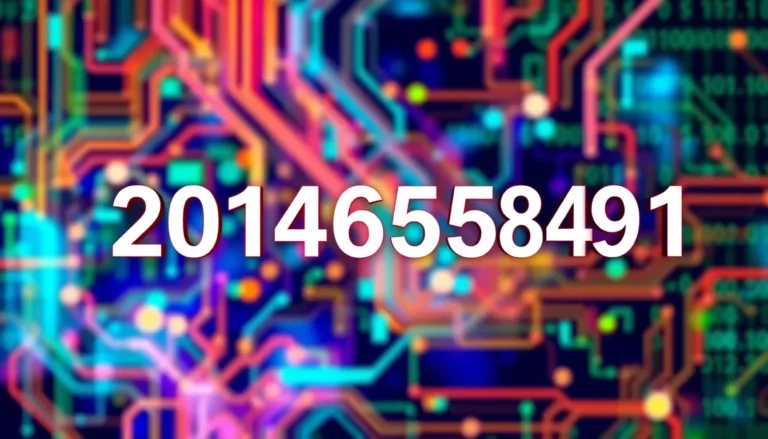Imagine a world where your health is monitored by devices that are smarter than your average bear. Welcome to the age of IoT healthcare devices, where technology meets wellness in a way that’s both revolutionary and a little bit sci-fi. These gadgets aren’t just cool; they’re game-changers, transforming how people manage their health from the comfort of their homes—or wherever they happen to be binge-watching their favorite series.
From smartwatches that track heart rates to connected glucose monitors that send alerts faster than a friend can text “Did you see that meme?” IoT healthcare devices are making health management not just easier but also a lot more entertaining. With these innovations, staying healthy doesn’t have to feel like a chore. Instead, it can be an interactive experience that keeps you engaged, informed, and maybe even a little amused.
Table of Contents
ToggleOverview of IoT Healthcare Devices
IoT healthcare devices significantly enhance health management through seamless integration of technology. They empower users by providing real-time health data and insights, resulting in better lifestyle choices.
Definition and Purpose
IoT healthcare devices encompass a broad range of interconnected gadgets designed for monitoring health metrics. These tools include smartwatches, blood pressure monitors, and wearable fitness trackers. Their primary purpose is to collect and transmit health-related data, enabling users and healthcare providers to make informed decisions. Remote patient monitoring becomes feasible through these devices, allowing for proactive healthcare management and personalized treatment plans.
Key Features
Key features of IoT healthcare devices contribute to their effectiveness in health management. Real-time data collection enables users to track vital signs continuously. Secure data transmission ensures patient privacy while enabling remote access for healthcare professionals. User-friendly interfaces facilitate engagement, making health tracking straightforward. Alerts and notifications inform users of significant health changes promptly, promoting timely interventions. Integration with mobile applications provides easy access to health records and insights, enhancing user experience and adherence to health goals.
Benefits of IoT Healthcare Devices

IoT healthcare devices offer various advantages that streamline health management and enhance patient care.
Improved Patient Monitoring
These devices provide continuous patient monitoring. Smartwatches and wearable sensors track vital signs like heart rate and oxygen saturation in real time. Data transmission occurs seamlessly, allowing healthcare providers to adjust treatment plans promptly. Continuous monitoring promotes early detection of potential health issues. Timely interventions contribute to better health outcomes for patients. Enhanced visibility into patient conditions fosters stronger relationships between healthcare professionals and their patients. Remote monitoring reduces hospital visits while keeping patients engaged in their health management. As a result, caregivers can respond quickly to changes in patient status, ensuring safety and well-being.
Enhanced Data Collection
Data collection becomes more comprehensive with IoT healthcare devices. Devices automatically track various health metrics, including blood glucose levels and physical activity. This automated process reduces manual input errors and provides more reliable data. Also, collected data is stored securely in the cloud, enhancing long-term accessibility. Healthcare providers benefit from consolidated health information, allowing for informed decision-making. The availability of historical data aids in recognizing trends and patterns that support personalized care plans. Consequently, both patients and healthcare professionals can make informed lifestyle choices, improving overall health outcomes.
Challenges in IoT Healthcare Devices
IoT healthcare devices face several challenges that impact their effectiveness and adoption.
Security Concerns
Security risks pose significant hurdles for IoT healthcare devices. Unauthorized access to personal health data can lead to privacy violations and identity theft. Cyberattacks targeting connected devices have increased, exposing sensitive patient information. Inadequate encryption methods heighten these vulnerabilities, making it easier for hackers to intercept data. Users’ trust in these devices wavers when security breaches occur. Ensuring robust security measures like regular software updates, data encryption, and secure authentication methods helps mitigate these risks making devices safer for patients.
Regulatory Issues
Regulatory compliance presents another challenge for IoT healthcare devices. Regulatory bodies like the FDA require stringent testing and approval processes for medical devices. Navigating these complex regulations can delay product development and market entry for manufacturers. Additionally, varying regulations across regions complicate the global deployment of IoT healthcare devices. Adhering to these regulatory standards ensures devices are safe and effective, but this process often leads to increased costs and time. Manufacturers must balance innovation with compliance to successfully launch and sustain these life-changing technologies.
Future Trends in IoT Healthcare Devices
Emerging trends in IoT healthcare devices continue to shape the landscape of health management. Innovations in technology enhance patient care and streamline healthcare processes.
Integration with AI
Integration with AI transforms data collected by IoT devices. Machine learning algorithms analyze vast amounts of health data, providing predictive insights for users and healthcare providers. Real-time analytics facilitate timely interventions, significantly impacting patient outcomes. AI also personalizes health recommendations, making wellness plans tailored to individual needs. The synergy between IoT and AI fosters a more proactive approach to health management.
Wearable Technology Innovations
Wearable technology innovations drive the evolution of IoT healthcare devices. Devices like smartwatches and fitness bands now offer advanced features such as ECG monitoring and oxygen saturation tracking. These innovations promote continuous health monitoring, empowering users to stay ahead of potential health issues. Enhanced battery life and smaller designs make wearables more convenient, encouraging widespread adoption. As technology advances, these devices will become even more integral to daily health management, influencing preventive care strategies.
IoT healthcare devices are revolutionizing the way individuals approach health management. Their ability to provide real-time data and insights empowers users to make informed decisions about their well-being. With features that enhance user experience and promote proactive care, these devices foster a deeper connection between patients and healthcare providers.
While challenges like security and regulatory compliance exist, the potential benefits far outweigh the hurdles. As technology continues to evolve, incorporating AI and advanced monitoring capabilities, IoT healthcare devices will play an even more vital role in enhancing health outcomes. The future of health management is undoubtedly intertwined with these innovative technologies, promising a healthier and more engaged society.



